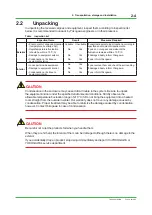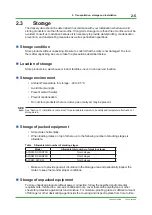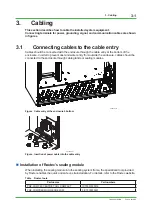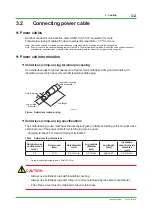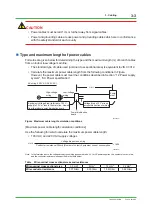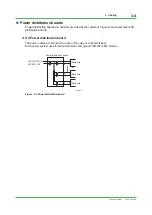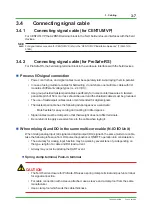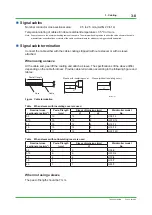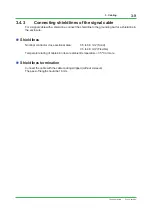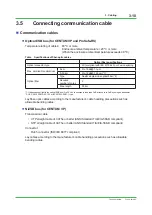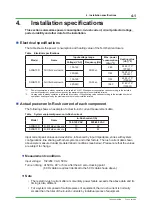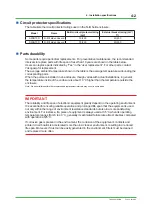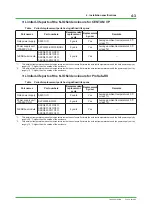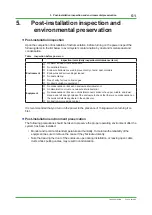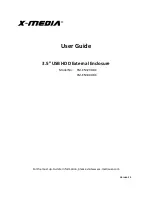
4. Installation specifications
4-1
TI 30A30A10-01EN
4. Installation specifications
This section summarizes power consumption, in-rush current, circuit protector ratings,
parts durability and other data for the installation.
n
Electrical specifications
The table shows the power consumption and heating value of the N-IO field enclosure.
Table Electrical specifications
Model
Name
Input-voltage range
Max. power
consumption
(VA) (*1)
Heating value
(J/h) (*2)
Voltage (V AC) Frequency (Hz)
A2NN70D
N-IO field enclosure
100-120
50/60±3
980
3492 × 10
3
(970 W)
220-240
1180
3420 × 10
3
(950 W)
S2NN70D
N-IO field enclosure
100-120
50/60±3
1190
4248 × 10
3
(1180 W)
220-240
1360
4140 × 10
3
(1150 W)
*1:
Power consumption in steady operation is indicated in VA (AC). When power consumption varies according to the installed
number of equipment, power consumption by the maximum number of units installed is listed.
*2:
Heating value in steady operation is indicated in Joule/hour. When heating value varies according to the installed number of
equipment, heating value by the maximum number of units installed is listed.
n
Actual power-on In-Rush current of each component
The following shows an example of actual in-rush current measurement data.
Table System equipment power-on In-Rush current
Model
Name
In-Rush current (A)
100-120 V AC
220-240 V AC
A2NN70D
N-IO field enclosure
70
92
S2NN70D
N-IO field enclosure
70
92
Input current peak values and waveforms, influenced by input impedance, varies with system
configurations, line sharing with other systems, and other factors. The rush current data shown
above were measured under predetermined conditions (see below). Please note that the values
are subject to change.
l
Measurement conditions
Input voltage: 132/264 V AC, 50 Hz
Turn-on timing: At 50 Hz, 90° or 5 ms after the AC zero-crossing point
(60 Hz data are almost identical to the 50 Hz data shown above.)
l
Note
• The restart in-rush current after a momentary power failure exceeds the above data and its
timing is also different.
• For a system composed of multiple pieces of equipment, the in-rush current is normally
smaller than the total of the in-rush currents by individual pieces of equipment.
Feb. 26, 2018-00

